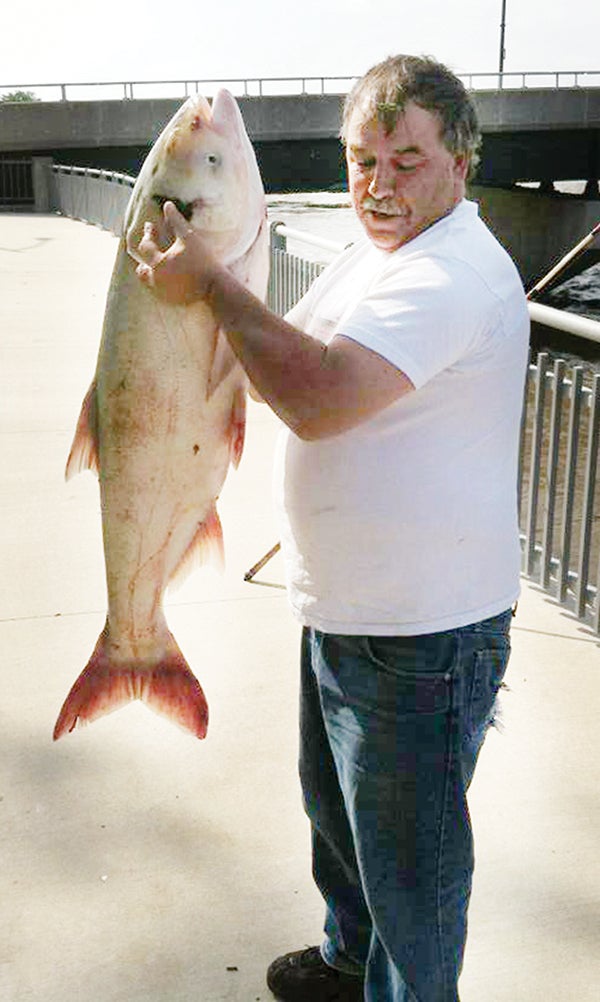Invasive fish creeping up the Cedar
Published 10:29 am Thursday, May 30, 2013
The Cedar River has some visitors working their way upstream, but they’re far from welcome.

Mat Cox of Waterloo, Iowa, hoists a 35-pound Asian bighead carp he caught on the Cedar River in Waterloo Wednesday morning. That is the northernmost location the invasive species has been found on the Cedar. — Photo provided
Mat Cox of Iowa fought with one of the brutes on the end of his fishing line for nearly 40 minutes on the Cedar River Wednesday morning in Waterloo, only to find out the disturbing news. He caught an Asian bighead carp, an invasive species that has been problematic in Midwest lakes and rivers as it competes for food with native bottom feeders and juvenile game fish. Another species, the silver carp, or flying carp, has also been a nuisance in other areas as it jumps out of the water when spooked, and sometimes hits people.
“My technician has been struck in the back of the head,” said Kim Bogenschutz, Iowa DNR aquatic invasive species program coordinator.
Wednesday’s find is the northernmost location the bighead species has been documented in the Cedar River, according to the Iowa Department of Natural Resources. Iowa DNR officials retrieved the 35-pound fish from Cox on Wednesday morning and will do testing with Iowa State University in hopes to figure out the fish’s age, genetics, origin and whether it is reproducing in the Cedar River. Officials aren’t all that surprised, however.
“They knew they were coming,” Cox said. “They just didn’t know when. Even at the bait shop they were like, ‘Oh no.’”
DNR officials have known both Asian bighead and silver, or flying, carp have been in the Cedar for quite some time; however, during flooding the invasive species move into new areas, which begs another question. How far can those fish travel up the Cedar?
“Could they make it all the way up to Minnesota? Probably,” Bogenschutz said.
Asian carp have been documented in Minnesota since 1996 but not in large populations. In southeastern Minnesota, they are only documented in the Mississippi River. However, they have been documented as far north as the St. Croix River near the Wisconsin border, according to the Minnesota DNR.
While the Cedar is considerably shallower in Minnesota than Iowa, there may still be the potential for Asian carp to migrate. Brian Nerbonne, Minnesota DNR stream habitat consultant, said the fish are explorers and are looking for new habitat.
“The thing that we’ve been finding is that Asian carp are explorer-type fish,” Nerbonne said. “They’ve been known to probe into other smaller drainages, looking for new habitats.”
Bogenschutz added, “They do like deeper water, but it doesn’t take much for them to go into new areas.”
Fish experts aren’t sure of the best measure to stop the spread of the invasive species. Nerbonne said experts have considered placing structures in certain water bodies, so the fish can’t migrate further. However, natural resource workers also want to ensure other fish won’t be adversely affected. The solution isn’t easy.
For now, those who see or catch Asian carp should contact their local DNR offices. Furthermore, those who catch Asian carp while fishing may not release them back into the water, Nerbonne said.




